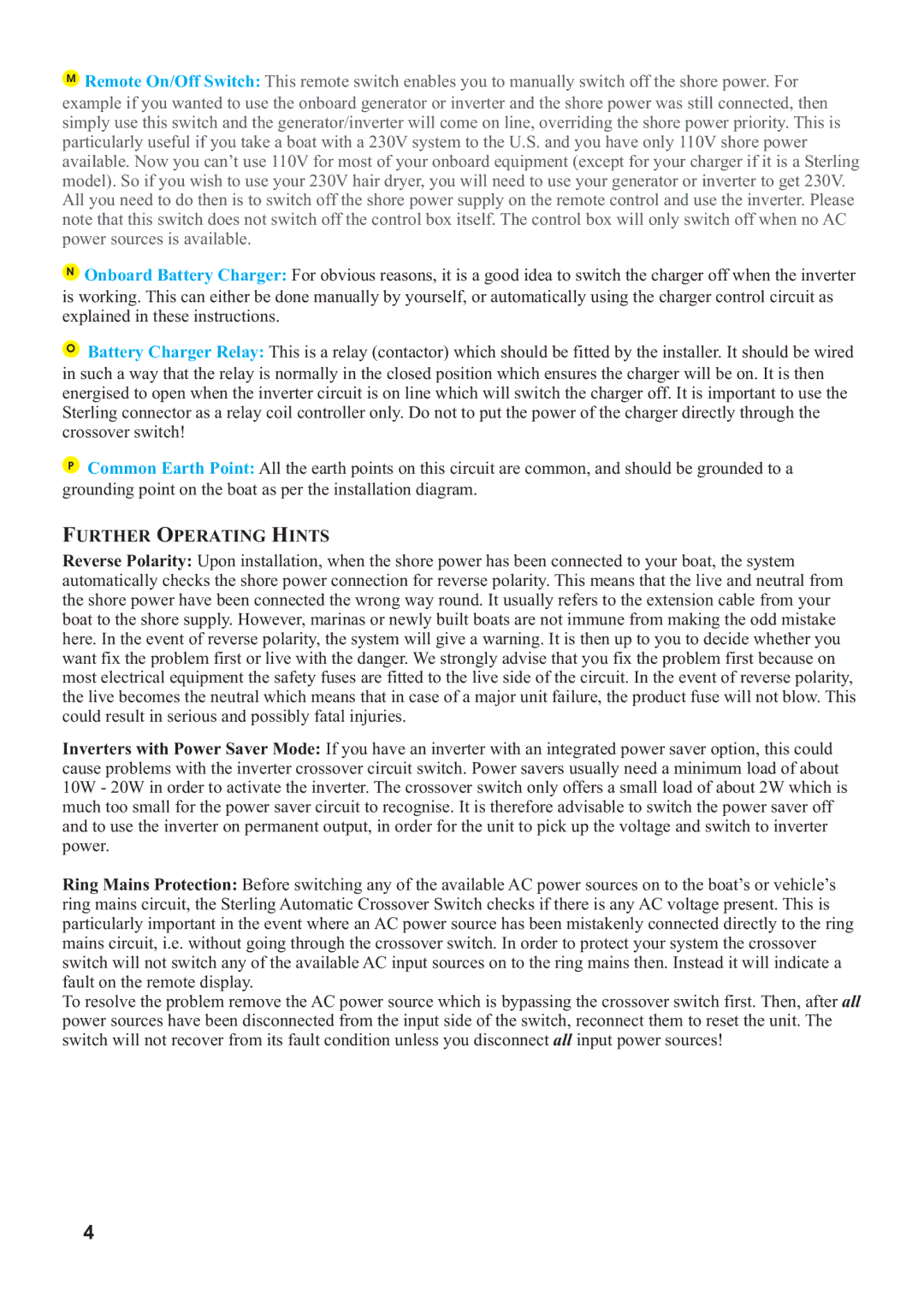MRemote On/Off Switch: This remote switch enables you to manually switch off the shore power. For example if you wanted to use the onboard generator or inverter and the shore power was still connected, then simply use this switch and the generator/inverter will come on line, overriding the shore power priority. This is particularly useful if you take a boat with a 230V system to the U.S. and you have only 110V shore power available. Now you can’t use 110V for most of your onboard equipment (except for your charger if it is a Sterling model). So if you wish to use your 230V hair dryer, you will need to use your generator or inverter to get 230V. All you need to do then is to switch off the shore power supply on the remote control and use the inverter. Please note that this switch does not switch off the control box itself. The control box will only switch off when no AC power sources is available.
NOnboard Battery Charger: For obvious reasons, it is a good idea to switch the charger off when the inverter is working. This can either be done manually by yourself, or automatically using the charger control circuit as explained in these instructions.
OBattery Charger Relay: This is a relay (contactor) which should be fitted by the installer. It should be wired in such a way that the relay is normally in the closed position which ensures the charger will be on. It is then energised to open when the inverter circuit is on line which will switch the charger off. It is important to use the Sterling connector as a relay coil controller only. Do not to put the power of the charger directly through the crossover switch!
PCommon Earth Point: All the earth points on this circuit are common, and should be grounded to a grounding point on the boat as per the installation diagram.
FURTHER OPERATING HINTS
Reverse Polarity: Upon installation, when the shore power has been connected to your boat, the system automatically checks the shore power connection for reverse polarity. This means that the live and neutral from the shore power have been connected the wrong way round. It usually refers to the extension cable from your boat to the shore supply. However, marinas or newly built boats are not immune from making the odd mistake here. In the event of reverse polarity, the system will give a warning. It is then up to you to decide whether you want fix the problem first or live with the danger. We strongly advise that you fix the problem first because on most electrical equipment the safety fuses are fitted to the live side of the circuit. In the event of reverse polarity, the live becomes the neutral which means that in case of a major unit failure, the product fuse will not blow. This could result in serious and possibly fatal injuries.
Inverters with Power Saver Mode: If you have an inverter with an integrated power saver option, this could cause problems with the inverter crossover circuit switch. Power savers usually need a minimum load of about 10W - 20W in order to activate the inverter. The crossover switch only offers a small load of about 2W which is much too small for the power saver circuit to recognise. It is therefore advisable to switch the power saver off and to use the inverter on permanent output, in order for the unit to pick up the voltage and switch to inverter power.
Ring Mains Protection: Before switching any of the available AC power sources on to the boat’s or vehicle’s ring mains circuit, the Sterling Automatic Crossover Switch checks if there is any AC voltage present. This is particularly important in the event where an AC power source has been mistakenly connected directly to the ring mains circuit, i.e. without going through the crossover switch. In order to protect your system the crossover switch will not switch any of the available AC input sources on to the ring mains then. Instead it will indicate a fault on the remote display.
To resolve the problem remove the AC power source which is bypassing the crossover switch first. Then, after all power sources have been disconnected from the input side of the switch, reconnect them to reset the unit. The switch will not recover from its fault condition unless you disconnect all input power sources!
4
